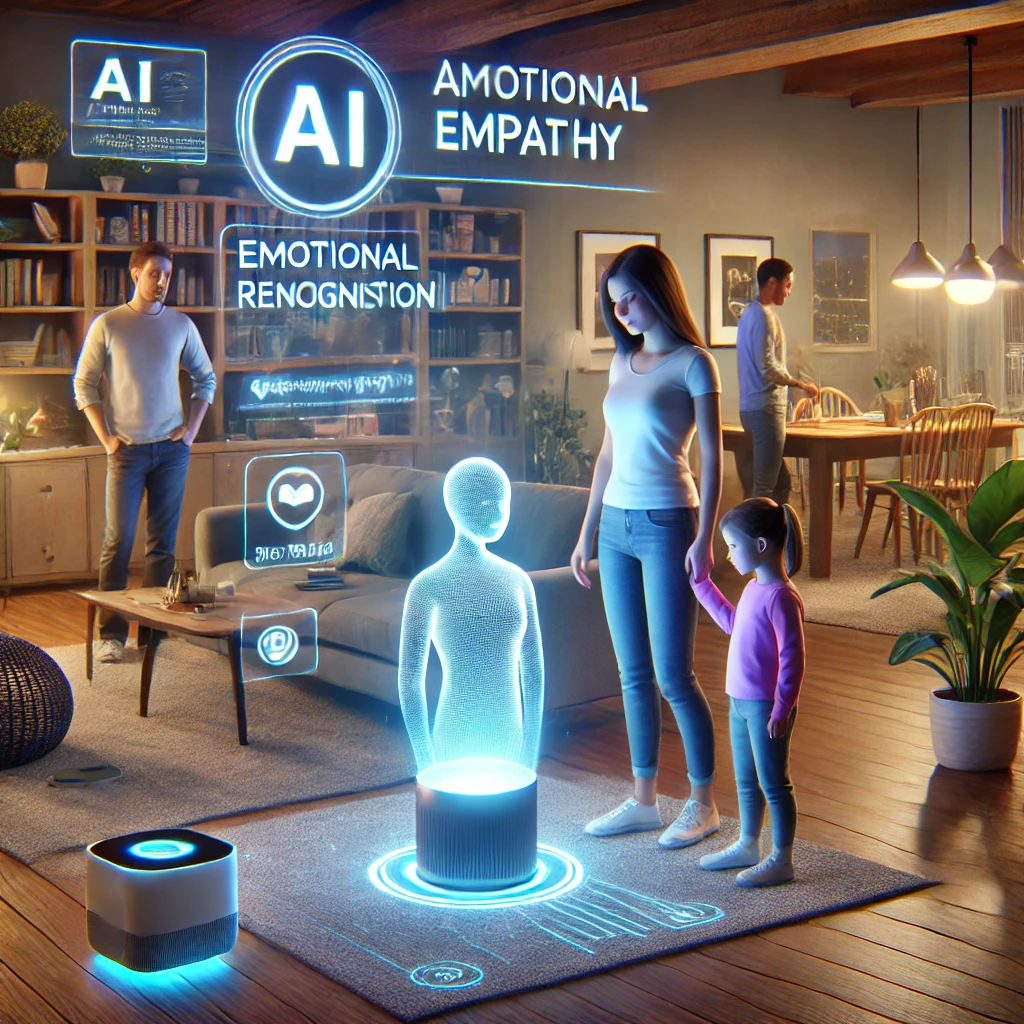AI agents with emotional intelligence: The next evolution in smart homes
True interaction requires more than just following commands - it requires a sense of emotional intelligence. The study highlights that many home AI agents fail to recognize user emotions, needs, and contexts, which can result in frustration or ineffective assistance.

Would you trust an AI that understands your emotions? While home service AI has made significant strides, there’s still a significant gap between functionality and meaningful human-like interaction. A new study titled "Artificial Empathy in Home Service Agents: A Conceptual Framework and Typology of Empathic Human-Agent Interactions" dives deep into artificial empathy - the ability of AI agents to recognize, understand, and respond to human emotions in a way that feels natural and engaging. The study also introduces a structured framework for AI agents used in the home service domain to better connect with users through empathic interactions.
Why artificial empathy matters in smart home AI
True interaction requires more than just following commands - it requires a sense of emotional intelligence. The study highlights that many home AI agents fail to recognize user emotions, needs, and contexts, which can result in frustration or ineffective assistance.
By integrating artificial empathy, AI agents could provide more intuitive support by understanding mood, responding appropriately to tone and context, and creating a more personalized user experience. The study stresses that the future of home AI depends not just on task execution but on the ability to build trust and human-like rapport with users.
To structure and improve AI’s emotional capabilities, the study introduces the Empathic HAX (Human-Agent Interaction) Canvas. This framework categorizes home AI into three types based on their ability to process and express empathy. The first type, The Loyal Assistant, operates at a basic level, executing simple commands without deeper emotional recognition. This includes smart devices that adjust settings based on usage patterns but fail to interpret human frustration or urgency.
The second type, The Qualified Butler, is more advanced, recognizing contextual cues and making automated decisions based on user behavior. However, it still lacks the depth of emotional understanding needed for human-like engagement. The highest level, The Reliable Mate, is a sophisticated AI designed for emotionally rich interactions, such as elderly care or mental health support, where recognizing and responding to human emotions is crucial.
Challenges in achieving artificial empathy: Why AI still struggles
While the potential of artificial empathy is promising, there are several barriers that must be addressed. One major challenge is AI’s limited ability to interpret complex human emotions. Despite advancements in natural language processing and facial recognition, AI still struggles to detect subtle emotional shifts or non-verbal cues like sarcasm or hesitation. Additionally, the reliance on scripted responses often makes AI-generated empathy feel robotic and inauthentic.
Another critical issue is privacy and ethical concerns. For AI to develop emotional intelligence, it requires extensive data collection, including voice tone, facial expressions, and behavioral patterns. This raises concerns about data security, potential misuse, and user consent, making it essential for AI developers to prioritize strong ethical guidelines and transparent policies.
AI in home services also faces technical limitations. Most current AI assistants rely on voice or text-based interactions, overlooking non-verbal cues such as body language, eye contact, or micro-expressions. For artificial empathy to be truly effective, AI systems must incorporate multimodal interaction capabilities, blending voice, facial recognition, and biometric feedback to create a more natural user experience.
What's next for Empathic AI agents in home service
Looking ahead, the study suggests several developments that could redefine the future of home AI. One key innovation is adaptive emotional learning, where AI continuously refines its understanding of an individual user’s emotional patterns over time. Instead of relying on pre-programmed responses, AI would learn from past interactions to provide more relevant and personalized support. This would allow home AI to adjust its responses based on user mood, context, and behavioral history.
Another important advancement is the shift towards more naturalistic AI-human interactions. Current AI assistants operate through a command-based structure, which can feel rigid and mechanical. Future AI systems are expected to engage in dynamic, two-way conversations, improving the flow and authenticity of interactions. Additionally, ethical considerations will play a larger role, with developers focusing on privacy-preserving AI models that ensure user data remains secure while enabling emotionally intelligent interactions.
- FIRST PUBLISHED IN:
- Devdiscourse










